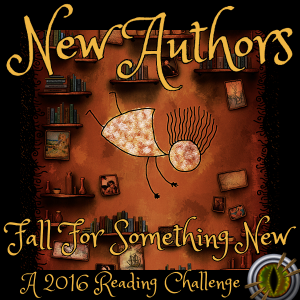Source: Public Library
Hardcover, 592 pgs.
I am an Amazon Affiliate
Stamped from the Beginning: The Definitive History of Racist Ideas in America by Ibram X. Kendi traces the origins of racism in the United States, noting that it began long before the civil war. In this volume, Kendi explores anti-racist ideas, uplift suasion (the idea that white people could be persuaded away from their racist ideas if they saw that Black people had improved their behaviors), and racism through the lens of five historical figures — Cotton Mather, Thomas Jefferson, William Lloyd Garrison, W.E.B. Du Bois, and Angela Davis. Through these interwoven histories, the myths of ignorance and hate causing racism and discrimination are dispelled to reveal that racial discrimination begot racist ideas and bred ignorance and hate, which to me should have been well understood by now. The fact that a comprehensive book of this nature is still needed and probably not as widely read as it should be shows how little we have traveled away from our past.
“But no racial group has ever had a monopoly on any type of human trait or gene — not now, not ever. Under our different-looking hair and skin, doctors cannot tell the difference between our bodies, our brains, or the blood that runs in our veins. All cultures, in all their behavioral differences, are on the same level. Black Americans’ history of oppression has made Black opportunities — not Black people — inferior.” (pg. 11)
Beginning with Aristotle and the barbarians of old, racism has a deep-seated hold on humanity, and these chains must be broken. The term “race” first appeared in a poem in 1481 called “The Hunt” by Jacques de Brézé, and it was used to refer to hunting dogs, but over the next 100 years it was used to “animalize” Africans. Reading this makes it clear to me that the penchant humanity has for categorizing everything into neat little boxes has only divided us for very little reason. The term “negars” was used in 1627, placing African slaves below servants in a hierarchy following the death of George Yeardley and the court decision regarding his estate. Africans were little more than cattle under this decision. It is these moments in history where a lack of understanding and a failure to properly research another culture and people have led European and American societies to denigrate the African people and their culture.
Repeatedly, throughout history, the victims of this failure are abused — sometimes at the hands of their fellow Africans and blacks. Even W.E.B. Du Bois failed to grasp anti-racist ideals after he was afforded a college education that many of his brethren would never achieve. But here’s the rub, his education was at the hands of those who already had failed to properly research and understand a culture unlike their own and who had quickly labeled it inferior because of their own failure to understand or wish to understand.
Kendi also delves into the inferiority of the Black woman, who as a group has been placed lower than the Black male because white men could not help but want to sleep with them and their mannerisms were not like the demur, white woman. Many of the stereotypes heaped on Black women today stem from these times, and they were never more plain than they were in the early suffragist movement. Even when it was clear that Africans knew more about how to combat smallpox, many white physicians failed to heed their advice because they are an inferior race. Logic and research again failed to permeate this scientific world.
In more modern history, Kendi examines the role of the NAACP, providing a wider perspective of their role in racism. Although Kendi makes valid points about the group relative to his over-arching arguments, we also must remember that in our wider failings some good can be achieved — small as it may be — though after more than 200 years of oppression one can see why there is a growing impatience and anger about the continued racism against a people that are not inferior. There also is a section on Harper Lee’s book in which Kendi decries the classic as more racist propaganda in which Blacks must wait for white saviors like Atticus Finch. This perspective made me view the book a bit differently because I had always viewed it as a book in which a young girl first realizes that discrimination exists against Black people and that her father was fighting against that discrimination.
One point I thought was really well made was on cultural appropriation, such as when cornrows were worn by Bo Derek and when Eminem rose to rap fame. “What was the most amazing about the whole uproar … was the hypocrisy of Black people. Some of those Black people who had permed their hair — an appropriation of European culture — were now ridiculing Bo Derek and other White women for braiding their hair and appropriating African culture.” (pg. 421) He also points out the economic policies of Reagan as harmful to not only Blacks, with the “median income of Black families declin[ing] by 5.2 percent.”
Stamped from the Beginning: The Definitive History of Racist Ideas in America by Ibram X. Kendi is a comprehensive look at American racism through the Obama administration’s first years. It is not only Whites he takes to task for their racism, as he point out how Blacks also held racist ideas about their own culture and brethren. In the epilogue, he offers some ideas about how racism can be eliminated, such as the elimination of the mechanisms that generate racial disparities and the use of local protests to focus on immediate areas of discrimination and ensure greater equality. This is a book that should be read in classrooms and by everyone.
RATING: Quatrain
About the Author:
Ibram X. Kendi is a New York Times best-selling author and historian located at the University of Florida. He won the National Book Award for Nonfiction for his book, Stamped from the Beginning: The Definitive History of Racist Ideas in America.
2017 New Authors Reading Challenge



 About the Author:
About the Author:



 My 1st book for Peril the Second!
My 1st book for Peril the Second!


